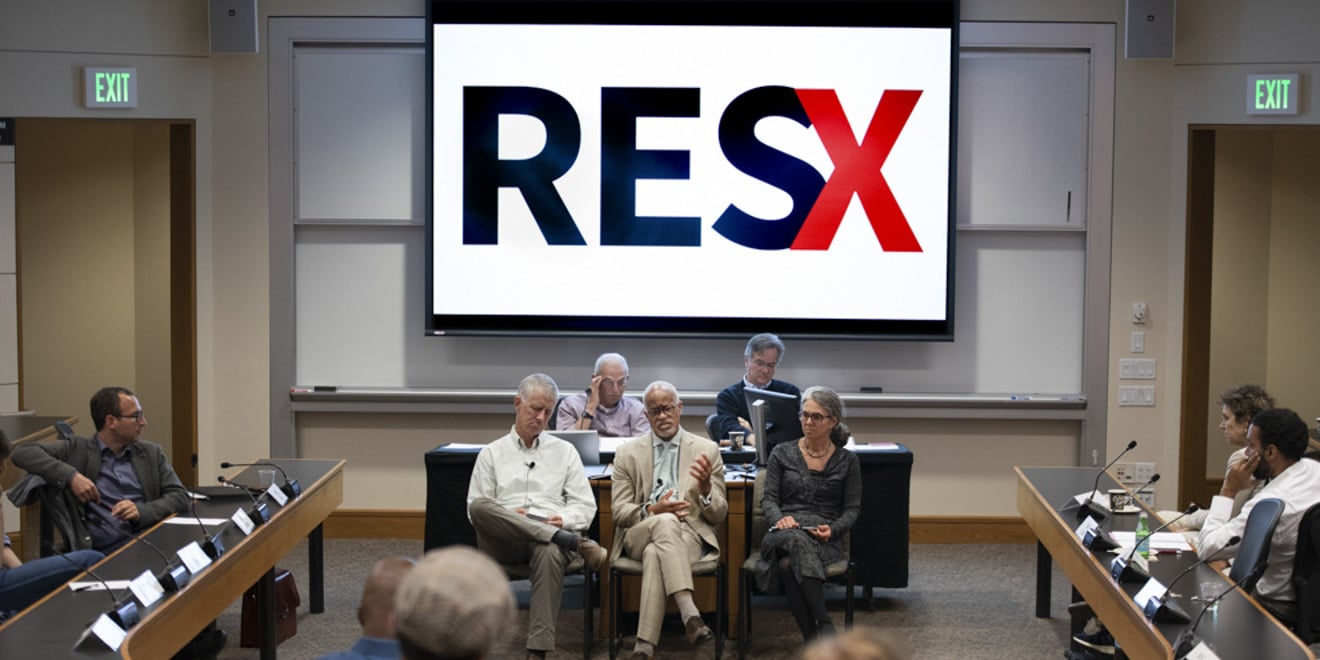This article is the first in a four-part series about the University’s Long-Range Planning efforts.
As part of Stanford’s ongoing Long-Range Planning process, the ResX Task Force has been working to develop a series of recommendations for improving residential life that will be presented to Provost Persis Drell at the end of fall quarter.
The Task Force was initially convened by Drell in April, and its work will inform future campus construction projects and undergraduate housing more broadly.
The Long-Range Planning process that spawned ResX began two years ago with suggestions from students, faculty, staff and alumni on how Stanford could be improved. Community members submitted a total of 2,808 ideas, which were then synthesized into a set of white papers and presented to President Marc Tessier-Lavigne and his executive cabinet. From those white papers, Tessier-Lavigne unveiled a series of recommendations in May 2018. The administration has since created “design groups,” like ResX, to respond to these recommendations.
Vice Provost for Undergraduate Education Harry Elam Jr. and Vice Provost for Student Affairs Susie Brubaker-Cole co-chair ResX, which includes students, residential fellows, professors, an alumnus and a member of the Board of Trustees. The Task Force has also received student input through focus groups, town halls and comments submitted online.
In addition to student input, the Task Force has been using psychology research, data from the Institutional Research and Decision Support Office and visits to Yale, Harvard, Dartmouth and Rice to inform its recommendations.
According to Elam and Brubaker-Cole, one of the Task Force’s main concerns is the housing assignment process. Elam noted that roughly 50 percent of students pre-assign into housing so they can avoid participating in the lottery-style housing “draw.”
“We’ve heard that one of the … single most stressful moments that students cite in their time at Stanford is in the end of freshman year, when they’re going into the draw for the first time,” Brubaker-Cole said. “They’re trying to make decisions about where they want to live and what it means for their friendship groups.”
The Task Force is also concerned with the pay structure for student residential staff. Currently, residential assistants (RAs) are paid the most while peer health educators (PHEs) and ethnic theme associates (ETAs) are paid significantly less.
“Certain staff positions are paid less than the RAs are paid while at the same time, residents don’t necessarily distinguish [between] staff roles [when it comes to] who they decide to go to with issues,” Brubaker-Cole said.
To Huanvy Phan ’20, an ETA in Okada who is working on the ongoing “More Pay for ETA” campaign, the issue of student staff wages reflects the University’s broader attitude toward students of color.
“This University does not value the labor of students of color,” Phan said. “Simply put, they don’t view the ethnic theme associate role as important as other roles.”
Phan said that the “More Pay for ETA” campaign is also demanding that ETAs be given ETA-specific training and curricula, former ETAs be compensated for their past labor, NSO visits to the cultural centers be mandatory and Okada and Casa Zapata be expanded into Junipero and Burbank, respectively.
The call for Okada and Casa Zapata to be expanded is a response to increasing demand from students to live in ethnic themed houses, according to Phan.
“Ethnic theme dorms are getting increasingly harder to draw into, especially for the students who identify with the ethnic theme,” Phan said. “The amenities are not very good, but despite that, people still want to live here so badly, and it’s getting increasingly difficult… I think that’s incredibly unfair.”
Another major component of ResX’s work, according to Elam, is to develop a vision for undergraduate residential life in the context of what he called a “four-year arc.”
“We’re looking at the four-year arc of what students should go through — what should happen in the first year of a student’s time at Stanford, versus sophomore, junior and senior year,” he explained.
ResX is particularly focused on figuring out the optimal residential experience for freshmen. Both co-chairs, however, said they have heard concerns about the “sophomore slump” and want to focus on improving the transition between freshman and sophomore year.
Another concern for the Task Force is inconsistent quality between different housing facilities. According to Elam, this complicates the housing assignment process.
“That may be a reason why the choices [in] the draw are so complex,” he said.
The Task Force is aiming to increase cohesiveness among residences by creating “neighborhoods” similar to Harvard’s “houses” or Yale’s “residential colleges.” According to Elam, the neighborhoods are geared towards fostering community through shared services such as dining halls, health services, community areas and performance spaces.
“Neighborhoods are basically housing clusters,” Elam said. “We have some 83 [to] 85 different housing options that students can choose from, and we want to bring them into conversation with each other.”
According to Brubaker-Cole, ResX is largely motivated by the University’s desire to “unstuff” current residences and expand the size of the undergraduate class over time, both of which would require more construction.
“In the past, spaces that had been common spaces or study rooms … were turned into rooms for students to live in, and we would like to see that unstuffing continue as we build more residences,” she said.
After the ResX Task Force submits its recommendations to the Provost at the end of fall quarter, Drell will review the recommendations and plan a strategy for enacting them. According to Brubaker-Cole, the recommendations will take shape over a variety of timeframes; building projects will likely take between 10 and 15 years while other projects may only last one or two years.
Contact Isabella Tilley at imtilley ‘at’ stanford.edu.
